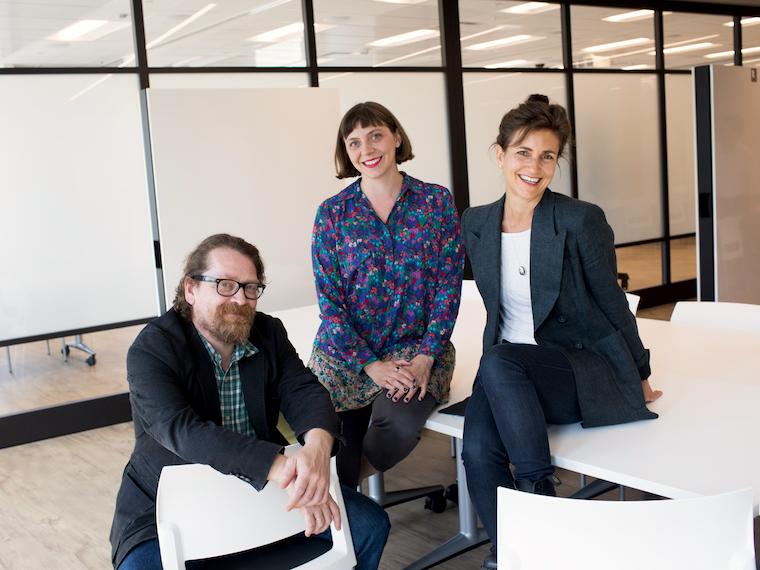Graphic Accounts: Telling Through Pictures
Students will gain hands-on, historical, and theoretical exposure to drawing as a practice for gaining knowledge and as a vehicle for artistic expression, the relationship between word and image, art as frame for experience, knowledge of self and other, objective reality and subjective experience.

Graphic Accounts: Telling Through Pictures
Offered spring 2018
What can we say with pictures that we cannot say with words? How does drawing demand different forms of attention than verbal description? What accounts for the western cultural tendency to privilege words over images for the communication of knowledge? What is the place of images in literary art?
In Graphic Accounts, students will gain hands-on, historical, and theoretical exposure to drawing as a practice for gaining knowledge and as a vehicle for artistic expression. Through creative and critical approaches to drawing, this learning community engages fundamental topics and problems in modern epistemology and ethics, including: the nature and history of observation, the relationship between word and image, art as frame for experience, knowledge of self and other, objective reality and subjective experience.
In Graphic Narrative and Graphic Anthropology, students will experiment with drawing as a mode of storytelling and cultural inquiry. Image and Enlightenment offers historical perspective on both activities. The struggles of the upstart, disreputable 18th-century novel to gain cultural legitimacy illuminates the status of graphic novels in contemporary culture.
No drawing experience is necessary for this learning community. Students must, however, be willing to experiment, to take artistic and intellectual risks. The required course for this learning community, Image and Enlightenment, also requires an open mind to explore a seemingly remote historical period.
As students will discover, the 18th century has played a formative role in both the ways we look at the external world and narrate our subjective experiences.
ENGL 214 and either ANTH 257 or CRWR 255 are required for enrollment in this learning community.
Instructors
This learning community features courses taught by Associate Professor of English Laura Baudot, Professor of Creative Writing Dan Chaon, and Associate Professor and Chair of Anthropology Erika Hoffmann-Dilloway.
Erika Hoffmann-Dilloway, instructor
ANTH 257 Graphic Anthropology
Meets Tuesday and Thursday, 1:30-2:50 pm, 4 credit hours; enrollment limit 25.
Either this course or Graphic Narrative required for Graphic Accounts: Telling Through Pictures learning community.
This course explores past contributions of and future possibilities for sketching and drawing as anthropological methods. How can sketches complement field notes? How might graphic ethnographies complement scholarly books and articles? How do anthropologists across the “four-fields” engage graphic methods in different ways? What ethical issues might accompany the increasing use of graphic methods?
While students do not need any special background in or skill with drawing, participation in this course will involve active experimentation with graphic means of observing, participating in, and analyzing interactions, and of circulating anthropological insights.
Either this course or Graphic Narrative required for “Graphic Accounts: Telling Through Pictures” StudiOC Learning Community.
Dan Chaon, instructor
CRWR 255 Graphic Narrative
Meets Wednesdays, 7-10 pm, 4 credit hours; enrollment limit 20.
Either this course or Graphic Anthropology required for Graphic Accounts Telling Through Pictures learning community.
This course will examine the emerging art of the graphic novel and related forms such as the comic book, comic strip, and manga, with particular attention to the ways in which the structure, rhetoric, and methods of the form relate to the other narrative form, such as fiction and drama.
Laura Baudot, instructor
ENGL 214 Image and Enlightenment
Meets Tuesday and Thursday, 11 am to 12:15 pm, 4 credit hours; enrollment limit 20.
Required for Graphic Accounts Telling Through Pictures learning community.
Image and Enlightenment explores the centrality of images for the 18th-century cultural project known as the Enlightenment. We examine physically embodied images that circulated in 18th-century print culture as illustrations in philosophical treatises, scientific voyages of discovery, and the novel. We also study theories of the image as developed in Enlightenment debates about the nature of the imagination.
Students in this course will examine Enlightenment images, material and immaterial, across genres, from the Encyclopédie, to the illustrated novel, to landscape treatises. Labs in Special Collections in Mudd Center library afford hands-on knowledge of the variety and uses of images in the Enlightenment.